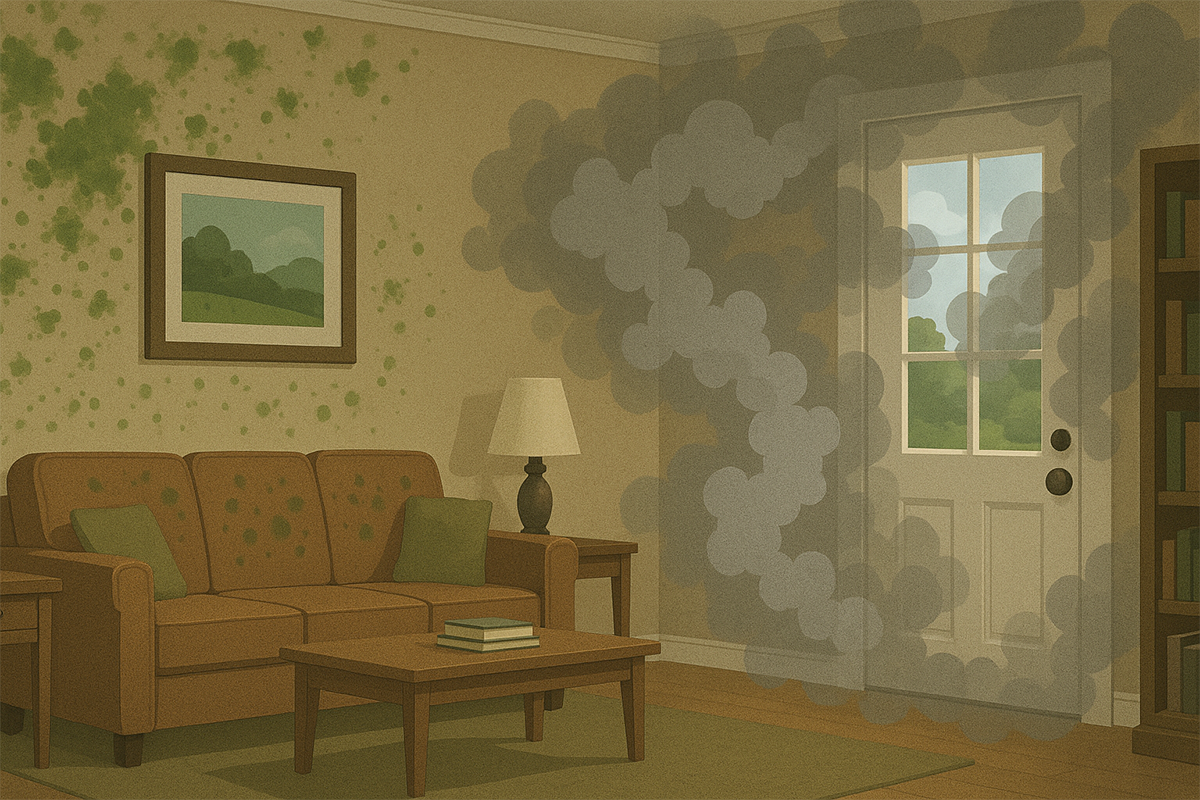
When most people think about pollution, they picture smog-filled skylines, heavy traffic, or industrial smokestacks. Outdoor air pollution is a genuine concern, but what many homeowners and business owners don’t realize is that the air inside their building may actually be more harmful than what’s outside.
The U.S. Environmental Protection Agency (EPA) estimates that indoor air can be two to five times more polluted than outdoor air. Considering that we spend about 90% of our time indoors, that difference adds up. So, which poses the bigger risk—indoor air quality issues or outdoor pollution? Let’s break it down.
Understanding Outdoor Pollution
Outdoor pollution is made up of contaminants released into the air from natural and manmade sources, including:
- Particulate matter (PM2.5 and PM10): Tiny particles from combustion, dust, and smoke that can lodge deep in the lungs.
- Ground-level ozone: A byproduct of vehicle emissions and industrial activity that can trigger asthma and other respiratory issues.
- Nitrogen oxides (NOx) and carbon monoxide (CO): Commonly from cars, power plants, and fossil fuel burning.
- Pollen and allergens: Seasonal outdoor triggers that can worsen respiratory conditions.
While these pollutants are serious, their levels fluctuate in response to weather, traffic, and seasonal changes. Outdoor air also has the advantage of dilution—open spaces allow pollutants to disperse.
Indoor Air Quality: What’s Lurking Inside
Indoor air quality (IAQ) refers to the condition of air within homes, offices, schools, and other enclosed spaces. Indoor pollution sources are often less visible but can be just as harmful, if not more so, than what’s outside:
- Mold and moisture-related contaminants from water damage, leaks, or humidity.
- Volatile organic compounds (VOCs) released from paints, cleaning products, furniture, and building materials.
- Asbestos fibers in older construction materials if disturbed or damaged.
- Combustion byproducts such as soot, carbon monoxide, or nitrogen dioxide from stoves, fireplaces, or malfunctioning HVAC systems.
- Radon, a naturally occurring radioactive gas that can seep into buildings from the soil.
- Dust, dander, and biological contaminants accumulate without proper cleaning and filtration.
Unlike outdoor air, which circulates and disperses, indoor pollutants often remain trapped—especially in tightly sealed buildings designed for energy efficiency but lacking adequate ventilation.
How Outdoor Pollution Becomes an Indoor Problem
Outdoor and indoor air quality aren’t separate issues—they’re deeply connected. Pollutants from traffic, wildfires, or industrial sources can enter buildings through gaps in the building envelope, such as leaky windows, doors, crawlspaces, or roof penetrations. HVAC systems can also contribute, either by drawing in unfiltered outdoor air or recirculating contaminants that have already entered. Even everyday activities, such as opening windows on a high-smog day or during wildfire season, can bring pollutants indoors. Once inside, these contaminants don’t simply dissipate—they combine with existing indoor pollutants and often remain trapped, raising the overall exposure risk for building occupants.
Why Indoor Air Pollution Often Hits Harder
While both outdoor and indoor pollution are serious, indoor air quality tends to have a greater impact on health and comfort:
- We spend more time indoors. Most people are exposed to indoor environments far more than outdoor ones.
- Pollutants combine. Outdoor contaminants don’t replace indoor ones—they add to them.
- Limited ventilation traps pollutants. Without proper filtration and airflow, contaminants linger and accumulate.
This means that even if outdoor air is improving in your area, poor indoor air quality can still put your health, property, and productivity at risk.
What You Can Do to Protect Indoor Air Quality
Improving indoor air quality goes beyond opening a window or plugging in an air purifier. A science-based, professional approach is key:
- Schedule an indoor environmental assessment. A comprehensive evaluation can identify hidden pollutants such as mold, asbestos, or combustion residues that a simple “air test” would miss.
- Address moisture issues quickly. Mold thrives in damp environments—leaks, condensation, and poor crawlspace or attic ventilation are common culprits.
- Inspect and maintain HVAC systems. Filtration, ductwork cleanliness, and airflow balance all play a significant role in IAQ.
- Be mindful of building materials and chemicals. Use low-VOC products where possible and store cleaners safely.
- Test for radon. Especially important in regions where radon levels are naturally higher.
The Bottom Line
Both outdoor pollution and indoor air quality are important, but since we spend most of our lives indoors, indoor air quality should be a top priority. A professional indoor environmental assessment can reveal issues that are not visible and provide a roadmap for remediation and prevention.
Our team uses building science diagnostics, moisture mapping, and accredited lab analysis to identify and address the root causes of poor air quality—not just the symptoms.
If you’re concerned about the air quality in your home or workplace, contact us today to schedule an assessment and take the first step toward a healthier environment.


